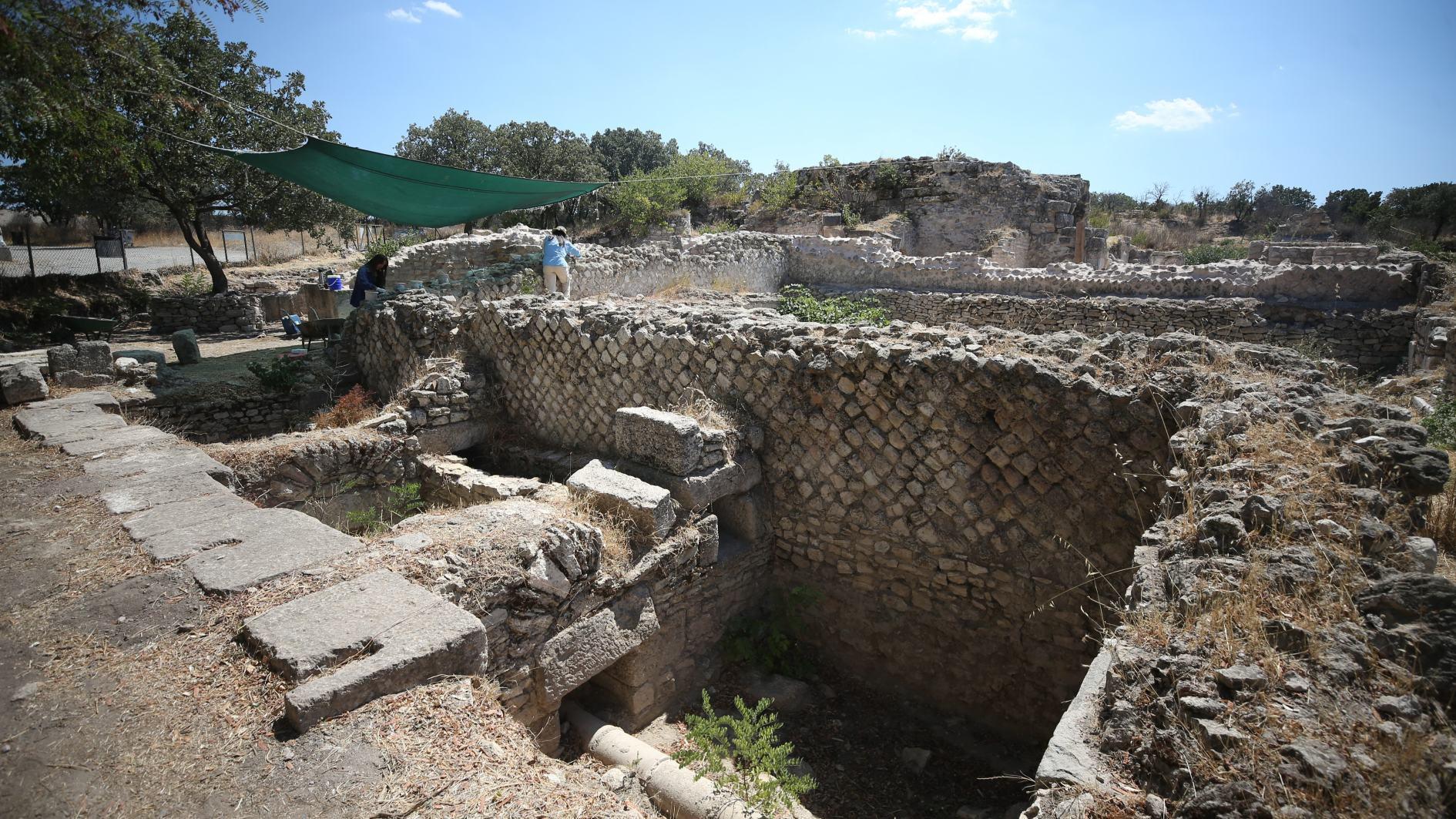
Archaeological excavations at Alexandria Troas, one of the largest ancient cities of Anatolia, continue to shed light on the region’s rich past, with this year’s work aiming to uncover a 2,000-3,000-seat odeon and a monumental structure linked to the city’s agora.
Located in the Ezine district of the western province of Çanakkale, Alexandria Troas was founded in the Hellenistic period and later transformed into a thriving Roman colony. By the 1st to 4th centuries A.D., its population is believed to have reached 100,000, making it one of the most important cities on the Aegean coast.
With its strategic position on the maritime trade routes between the Black Sea and the Mediterranean, and a harbor that exported the city’s renowned granite columns, Alexandria Troas played a vital role in the Roman Empire before being abandoned in the 13th century.
Excavations are led by Erhan Öztepe from Ankara University’s Faculty of Language, History and Geography. Speaking to Anadolu Agency, Öztepe explained that his team has been working in the forum area since 2011, an area central to understanding the city’s civic life.
While parts of the forum have already been consolidated and made visible, the last five years of research have concentrated on two largely unexplored sections: The odeon and a monumental stoa complex.
“The odeon is particularly significant,” Öztepe said. “We already know similar structures in cities like Aizanoi and Parion, but this will be another major example. In front of the odeon, an inscription was discovered in 2006 containing three letters addressed to Dionysian artists during the reign of Emperor Hadrian. These inscriptions mention festivals and prizes, proving that a theater-related community was active here.”
The odeon, a semi-enclosed venue for musical and theatrical performances, is estimated to have seated up to 3,000 people.
Excavations have already revealed the preserved outer walls, while the team is now working to reach the seating rows. “Our goal this season is to reach the cavea,” Öztepe said. “We are currently excavating the upper sections, where the upper seating tiers were located.”
Adding to its cultural significance, the northern corridor leading from the odeon to the forum contains a monument dedicated to a musician of Lesbos origin who achieved fame in the city.
Although the statue that once adorned the monument has not survived, its base demonstrates the honor bestowed upon artists in Alexandria Troas.
In parallel, the excavations are also uncovering a monumental complex linked to the city’s agora. This includes a stoa with an underground vaulted corridor, known as a cryptoporticus, and its connection to the decumanus, the city’s east-west main street.
“Large piles of collapsed vault stones still cover the cryptoporticus,” Öztepe explained. “If we can obtain crane support, we will be able to clear them and advance further west.”
“Last year, we discovered doorways in the section, showing us there were more rooms behind. We have reached only half the height so far, but expect the rooms to be around seven meters tall.”
The excavation has already revealed shop structures and public spaces.
Öztepe highlighted the city’s unique role in Roman history. “This was not treated like an ordinary Roman colony. The city was granted the same tax exemptions as Rome itself, which shows how important it was considered. Retired soldiers were settled here, strengthening its population and economy. Alexandria Troas was deliberately built up by the empire.”
Yet, despite the progress, large areas of the city remained untouched, particularly the residential districts.
“We suspect that Hellenistic houses later transformed into Roman villas, but because these areas lie under private property, we cannot excavate them at present,” Öztepe noted.
“If one day we can, we will be able to answer important questions like ‘Did the Romans simply build upon earlier Greek houses, or did they expand into entirely new neighborhoods? Did Hellenistic domestic traditions survive into the Roman period?’ These are key to understanding how the city evolved.”
For now, the focus remains on the forum, odeon and agora complex.